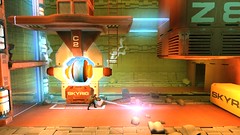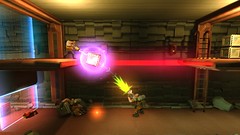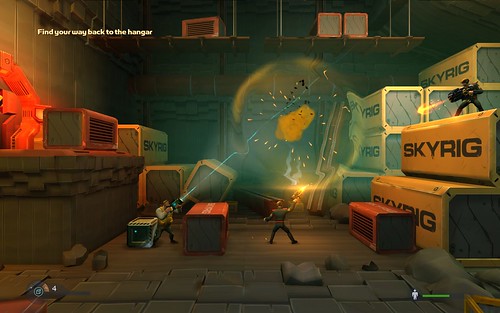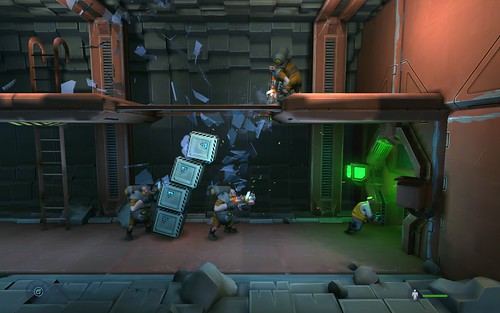Hello Internet, meet John Rochard. John, this is the internet. John is an astro miner, a regular Joe drilling for Turbinium (don’t ask) in deep space. Unfortunately he’s about to have the worst day of his career, and as luck would have it, we’ve made a platformer about it. Expect gravity puzzles, low-g combat and dubious one-liners. Today, I thought I’d share some history of how we came to build the game we did.
The thing is – it’s strange to think that just over a year ago John was a generic human character on screen. His hastily built model had a slightly twisted neck that made him look like a space Quasimodo. Oh, and he had a laser gun. I think the only interesting thing about him was that he moved in total zero-G by using recoil. We figured it’s the name of the company, so it must make for an awesome mechanic, right?
Turns out it’s tedious. Like, seriously tedious. At that point we were getting pretty frustrated. There was an expo coming up and we wanted to show something unique to publishers, but it couldn’t be what we had. We realized our recoil movement was unique, but mostly because it was so unbelievably annoying to play. We tried various other unique mechanics, until we decided that maybe by combining some existing but uncommon mechanics we’d find something for our rubbernecked protagonist to do.
We had already decided to make a platformer that is three-dimensional graphics-wise, but two-dimensional gameplay-wise. We ended up giving John a G-Lifter, which is our version of a gravity gun. While that was already fun by itself, the core gameplay only came together when we decided that the player should be able to control local gravity. In low-G mode, awesome jumps are possible and heavy objects can be thrown great distances. After all, astro miners need to move those heavy rocks somehow, don’t they?
After these key elements were nailed, the rest of the game came together fast. Because John is not a space marine (there are enough of those around already), we wanted him to use his mining tools as much as possible. We put a small force bubble around the objects you pick up, and that made a perfect shield. Since we had both human enemies on the ground and turrets in ceilings, the ricochets from enemy fire ended up causing friendly fire. We wasted no time making that appropriately fatal.
John still had his gun, or the Rock Blaster, as we call it (miners have to… blast, don’t they?), but with that came the concern that the combat would be too generic. Fortunately, that’s when we started playtesting it with outside folks who hadn’t met us and didn’t feel the pressure to say good things to the developers hovering behind their shoulders, chewing their fingernails anxiously with worried expressions. And that’s when we realized people were actually picking crates up and using those to kill the enemies – not because it’s more efficient, but because it’s a lot of fun.
So we concentrated on the G-Lifter. We still had a huge list of untested brainstormed ideas, vague concepts of gameplay mechanics that we had to decide whether to prototype or scrap. In the end, we ended up writing over a hundred Post-Its with ideas and posting them on our huge whitetable (a whiteboard that serves as a table so we can draw ideas really fast). We drew a diagram of dependencies, which told us how the various game mechanics were connected to other game mechanics. Then we threw out everything that didn’t need the G-Lifter. Problem solved.
With the core game mechanics down, we started designing the levels, and it wasn’t until then that we really started finding the best ideas. But seeing as how my plane to GDC leaves in a few hours, I’ll go into that a bit later…
















Comments are closed.
15 Comments
Loading More Comments